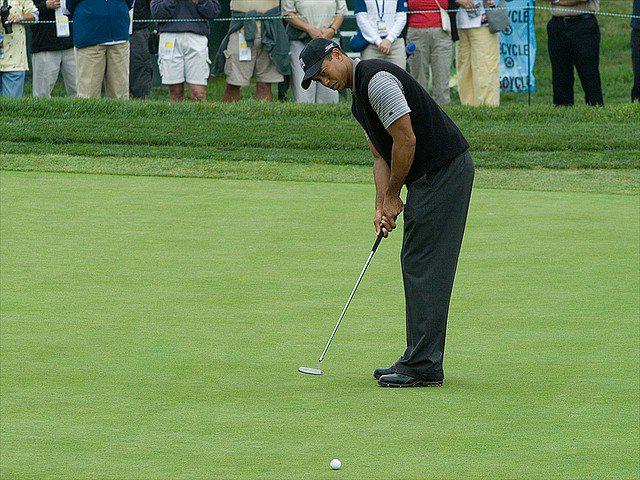Exploring the Art and Science of Golf Putting: Elevating Performance through Precision
In the pursuit of golfing prowess, the cornerstone lies in mastering the finesse and accuracy of the putting stroke. This scholarly discourse delves deep into the intricacies of this essential facet of the game, meticulously unraveling the technical craftsmanship and psychological facets that contribute to a dependable putting stroke. By conducting a thorough examination of putting mechanics, encompassing grip, stance, and alignment, we unveil the mechanical expertise essential for consistent execution. Furthermore, we delve into the profound impact of cognitive strategies such as focus, visualization, and self-assurance in sculpting the mental landscape of successful putting. Through a harmonious blend of technical mastery and psychological acumen, this article endeavors to shed light on the secrets of a reliable putting stroke, empowering golfers to unlock their full potential on the greens.
Harnessing the Power of Grip Mechanics for a Reliable Stroke
The grip acts as the conduit bridging the golfer and the putter, dictating the trajectory and consistency of the entire stroke. To achieve a consistent stroke, it is imperative for the grip to be firm and balanced, with the weight of the putter head evenly distributed in the hand.
Refining grip mechanics involves a systematic approach:
- Position: Strategically place your left hand (for right-handed golfers) on the grip with the palm facing downward and the thumb positioned on the top. Grip the putter with the right hand, interlocking your fingers with the left. Ensure the alignment of thumbs and fingers for optimal control.
- Pressure: Maintain a firm grip without excessive squeezing, as tension can impede a smooth swing. Balance pressure distribution between both hands for a seamless stroke.
- Placement: Position the grip so that the ball aligns with the center of your stance, ensuring correct clubhead alignment and promoting a straight putt.
By mastering these foundational grip mechanics, golfers can establish a sturdy foundation for a consistent and repeatable putting stroke.
Navigating Optimal Stance and Alignment for Precision Mastery
The foundation of a consistent stroke lies in an optimal putting stance. The stance width should match shoulder width, providing stability for a fluid and balanced swing. Proper knee flex of around 20-30 degrees enhances stability while maintaining mobility. Aligning the spine towards the target line ensures a consistent relationship between the ball and the club.
Alignment plays a pivotal role in directing the ball accurately towards the hole. Eye alignment should parallel the intended target line, shoulder alignment should mirror the target line, and clubface alignment should be perpendicular to the target line for square contact, minimizing deviations caused by clubface rotation. Additionally, positioning the ball inside the lead heel supports a consistent strike and a smooth forward swing, tailored to individual preferences and swing characteristics.
Orchestrating Rhythm and Timing for a Harmonious Stroke Flow
Rhythm and timing serve as the orchestra directors of a seamless putting stroke, underpinning its consistency and precision. Establishing a steady pace and consistent intervals between key swing phases are paramount. A well-optimized tempo allows the body to synchronize with the club’s movement, facilitating a smooth execution.
The duration and height of the backswing set the groundwork for the subsequent downswing. A precise backswing length ensures repeatability, while maintaining a consistent backswing height fosters stability and accuracy. Mirroring the cadence and trajectory of the backswing, the downswing facilitates a fluid and balanced motion.
Refining tempo involves internal cues like counting steps or breaths to establish a specific rhythm, aiding in the development of a consistent timing pattern that enhances predictability. This rhythm consistency fosters a finely tuned putting stroke, translating into exceptional accuracy and reduced variability.
Deciphering Greens: Understanding the Terrain of Undulations and Slopes
The ability to interpret greens is an indispensable skill in mastering the nuanced art of putting. Greens resemble a topographic canvas adorned with slopes, undulations, and contours that subtly influence the ball’s trajectory. To decipher their language, apply the following techniques:
- Study the Grain: Analyze the unique grain of each green, formed by the alignment of grass blades, impacting the ball’s roll. Align your putt to follow the natural trajectory of the blades.
- Observe Ridges and Swales: Identify ridges and swales that delineate the green’s topography. Ridges deflect the ball, while swales guide it gently. Understanding their location and effects enables compensation for potential deviations in the ball’s path.
- Segment the Green: Divide the green into sections, each with its distinctive undulations and slopes. Analyze the topography of each segment to determine the appropriate speed and direction for your putt.
Cultivating Psychological Mastery: Fostering Focus and Emotional Regulation
Amidst the symphony of mind and body lies the key to developing a consistent putting stroke. Mastery encompasses not just the mechanics of the swing but also the psychological nuances of the game. Cultivating intense focus, establishing consistent routines, and regulating emotions are vital components. By training the mind to remain composed under pressure and visualizing successful putts, golfers enhance their chances of executing accurate and precise strokes.
To achieve psychological mastery in putting, engage in regular mental exercises that enhance focus and control. Practices such as mindfulness techniques, deep breathing, and meditation foster focus and reduce stress. Establishing a pre-shot routine aids in maintaining focus and preventing rushed shots. Visualization exercises, where golfers vividly picture executing perfect putts, boost confidence and alleviate anxiety.
This comprehensive analysis of putting technique and psychology serves as a roadmap for golfers seeking to elevate their performance on the greens. By unraveling the technical intricacies of the putting stroke and understanding the psychological factors that influence success, golfers can hone a consistent and reliable putting game. This academic exploration acts as a valuable resource for golfers of all skill levels, empowering them with the knowledge and techniques necessary to conquer the greens and enhance their golfing prowess.







